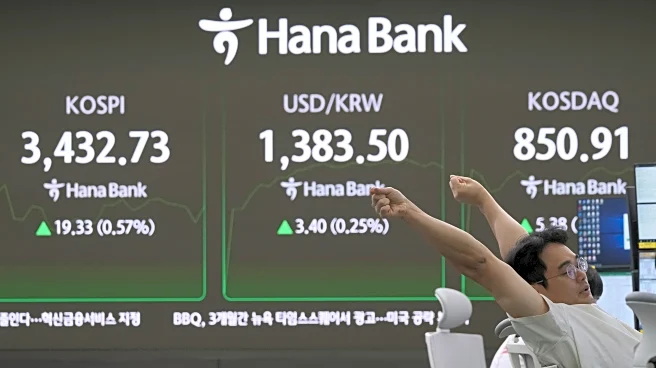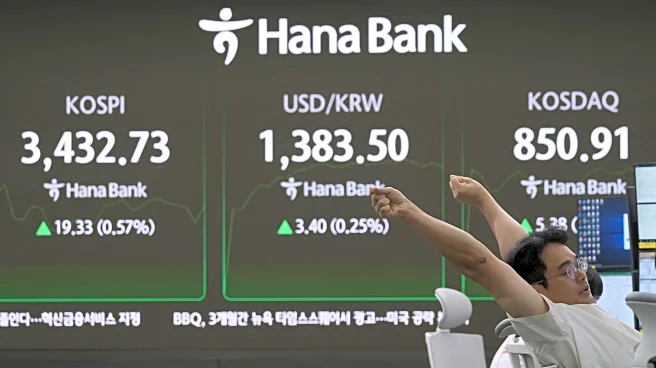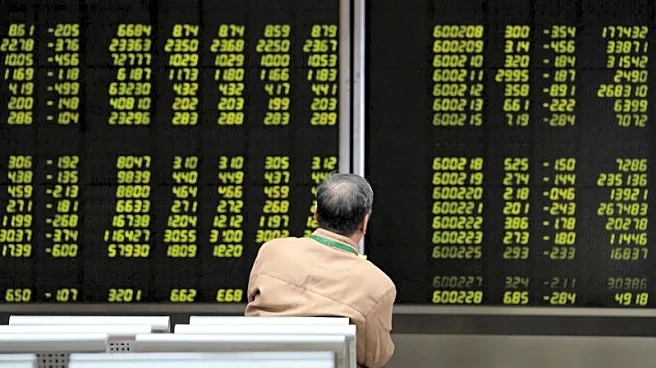What is the story about?
What's Happening?
The Federal Reserve's recent interest rate cut has set the stage for potential easing measures by Asian central banks. The Fed reduced its benchmark rate to 4%-4.25%, signaling more cuts ahead. This move narrows the gap between U.S. and Asian bond yields, easing currency concerns and providing room for Asian economies to lower rates. Countries like South Korea and Australia have already adjusted their rates in response to trade tensions and tariffs imposed by the Trump administration. The decision reflects the Fed's risk management approach rather than addressing a weak economy.
Why It's Important?
The Fed's rate cut is crucial for Asian economies facing domestic challenges and trade headwinds. By narrowing bond yield gaps, it provides these economies with more flexibility to implement accommodative policies. This could lead to increased investment and economic growth in the region, particularly for export-dependent countries like Japan and South Korea. The move also highlights the interconnectedness of global financial markets and the influence of U.S. monetary policy on international economic strategies.
What's Next?
Asian central banks may continue to adjust their rates in response to the Fed's actions, with further cuts expected in the fourth quarter. The Bank of Korea and Reserve Bank of India are likely to ease policies to support growth. The Fed's ongoing rate cuts could lead to a more prolonged easing cycle in Asia, especially with the U.S. dollar weakening. Economists will monitor inflation and growth indicators to assess the impact of these monetary policy changes.
AI Generated Content
Do you find this article useful?















